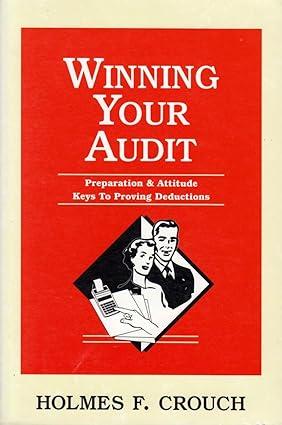Question
Project Management Course What went right? What went wrong? What are six recommendations that you would make and why? Agile (B): Project Management Mind-set Jane
Project Management Course
What went right?
What went wrong?
What are six recommendations that you would make and why?
Agile (B): Project Management Mind-set
Jane had been a project manager for more than 15 years. All of her projects were executed using traditional project management practices. But now she was expected to manage projects using an agile approach rather than the traditional project management approach she was accustomed to. She was beginning to have reservations as to whether she could change how she worked as a project manager. This could have a serious impact on her career.
THE TRIPLE CONSTRAINTS Jane believed that clear scope definition, sometimes on a microscopic level, had to be fully understood before a project could officially kick off. Sometimes as much as 3035 percent of the projects labor dollars would be spent in scope definition and planning the project. Jane deemed the exorbitant amount of money spent planning the project a necessity to minimize downstream scope changes that could alter the cost and schedule baselines. Senior management was adamant that all of the scope had to be completed. This meant that, even though senior management had established a target budget and scheduled end date, the project manager could change the time and cost targets based on the detailed scope definition. Time and cost had flexibility in order to meet the scope requirements. With agile project management, Jane would have to work differently. Senior management was now establishing a budget and a scheduled completion date, neither of which were allowed to change, and management was now asking Jane how much scope she could deliver within the fixed budget and date.
PLANNING AND SCOPE CHANGES Jane was accustomed to planning the entire project in detail. When scope changes were deemed necessary, senior management would more often than not allow the schedule to be extended and let the budget increase. This would now change. Planning was now just high-level planning at the beginning of the project. The detailed planning was iterative and incremental on a stage-by-stage basis. At the end of each stage, detailed planning just for the next stage would begin. This made it quite clear to Jane that the expected outcome of the project would be an evolving solution.
COMMAND AND CONTROL Over Janes 15-year career, as she became more knowledgeable in project management, she became more of a doer than a pure manager. She would actively participate in the planning process and provide constant direction to her team. On some projects, she would perform all of the planning by herself. With agile project management, Jane would participate in just the high-level planning, and the details would be provided by the team. This meant that Jane no longer had complete command and control and had to work with teams that were empowered to make day-to-day decisions to find the solution needed at the end of each stage. This also impacted project staffing; Jane needed to staff her projects with employees whose functional managers felt they could work well in an empowered environment. Janes primary role now would be working closely with the business manager and the client to validate that the solution was evolving. As project manager, Jane would get actively involved with the team only when exceptions happened that could require scope changes resulting in changes to the constraints.
RISK MANAGEMENT With traditional project management that was reasonably predictable, risk management focused heavily on meeting the triple constraints of time, cost, and scope. But with agile project management, where the budget and schedule were fixed, the most critical risk was the creation of business value. However, since the work was being done iteratively and incrementally, business value was also measured iteratively and incrementally, thus lowering some of the risk on business value.
Step by Step Solution
There are 3 Steps involved in it
Step: 1

Get Instant Access to Expert-Tailored Solutions
See step-by-step solutions with expert insights and AI powered tools for academic success
Step: 2

Step: 3

Ace Your Homework with AI
Get the answers you need in no time with our AI-driven, step-by-step assistance
Get Started


